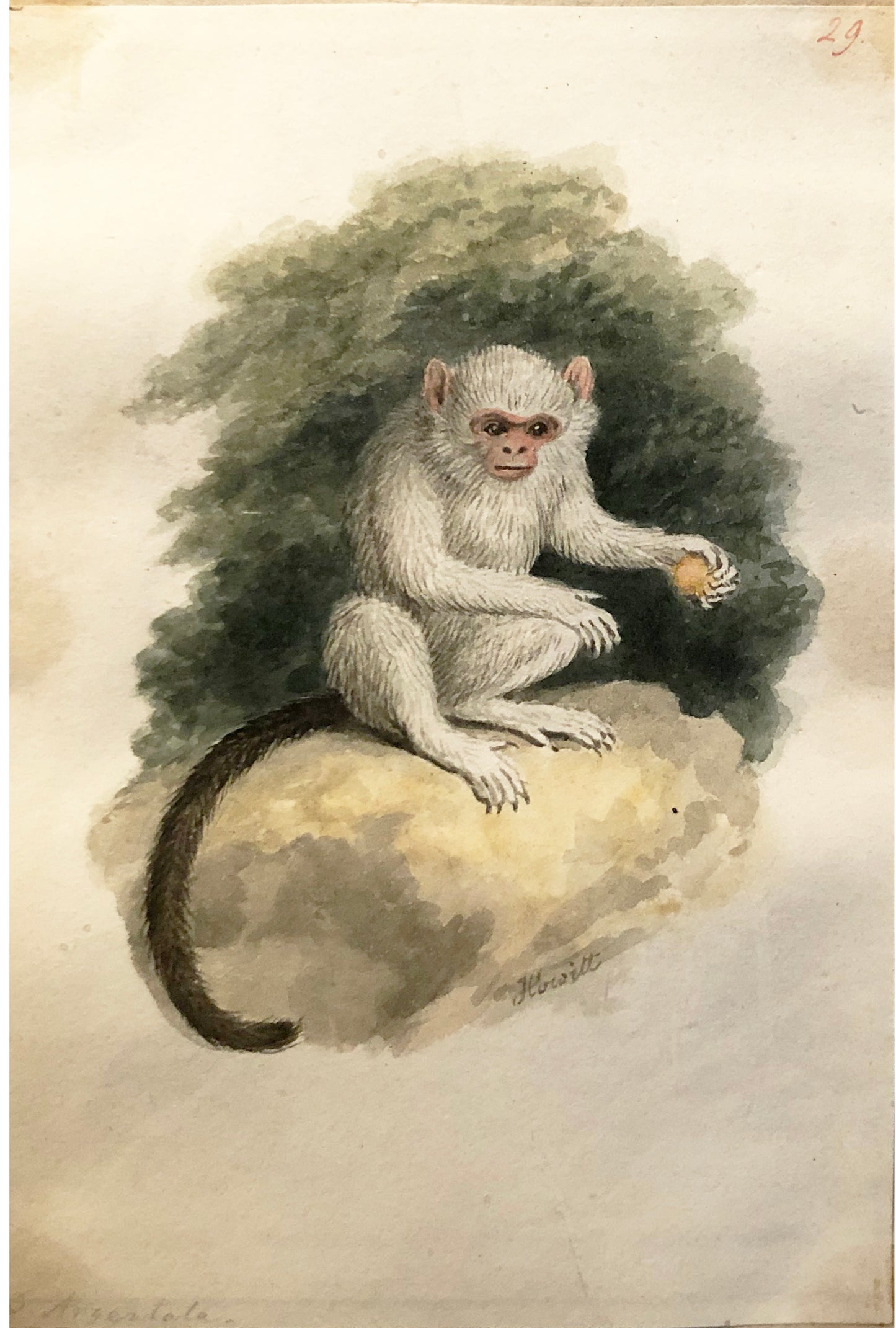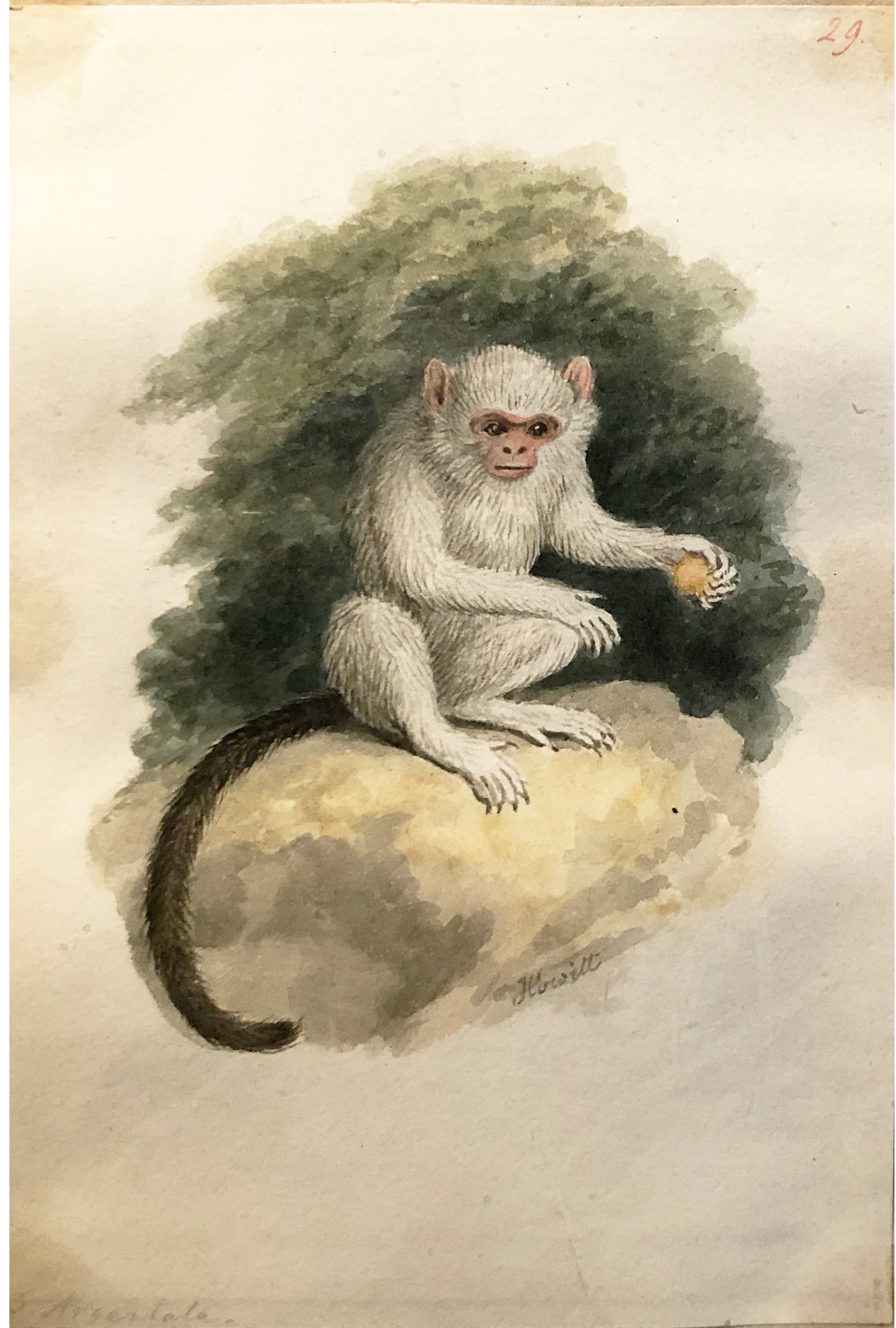from: The Finest Corpus of 18th and 19th century Watercolors Relating to South America Extant
SAMUEL HOWITT (BRITISH, 1765-1822) S. Argentata (Silvery Marmoset Monkey)
SAMUEL HOWITT (BRITISH, 1765-1822) S. Argentata (Silvery Marmoset Monkey)
Couldn't load pickup availability
SAMUEL HOWITT (BRITISH, 1765-1822)
S. Argentata (Silvery Marmoset Monkey)
Watercolor and pencil on paper
Signed ‘Howitt’ l.r.
Paper size: 7 1/4 x 4 1/2 in. Frame size: 17 3/4 x 15 in.
Provenance: Collection of Walter Faulkes, Fearnley Hall.
Silvery Marmosets (Callithrix argentata)
Native to the tropical rainforests south and east of the Amazon River in eastern Brazil, silvery marmosets are among the smallest New World monkeys—roughly the size of a squirrel. These arboreal primates make their homes in tree hollows, dense vegetation, and vine tangles, using the forest’s natural architecture for sleeping and protection.
Their coloration ranges from silvery white to dark brown. The darker individuals, which feature hairless ears and faces, are often called bare-ear marmosets. Due to their distinctive dark tails, they are also known as black-tailed monkeys. A notable feature is their sharply tapered jaw and short canine teeth—an evolutionary adaptation for their specialized feeding habits.
Unlike most New World monkeys, which have nails on all toes, silvery marmosets possess claws on every toe except the big toe, aiding in their agile climbing.
SAMUEL HOWITT (BRITISH, 1765–1822)
Samuel Howitt, a country gentleman from Chigwell, Essex, turned to art to mitigate financial difficulties brought on by a lavish lifestyle. Despite a Quaker upbringing, he embraced the spirited social world of London, often found in the company of his brother-in-law, the caricaturist Thomas Rowlandson. His love of sport—hunting, fishing, and gambling—ultimately eclipsed his domestic life, contributing to the dissolution of his marriage.
Though his early work was unrefined, Howitt’s skill developed rapidly into a distinctive style marked by quick, lively outlines, echoing Rowlandson’s influence. Between 1783 and 1815, he exhibited regularly at the Royal Academy and contributed to popular sporting publications, including The Angler’s Manual and The British Sportsman. Working in both oil and watercolor, he became known for his animated and engaging compositions.
Howitt’s most renowned publication, Oriental Field Sports, featured 40 aquatints based on Captain Thomas Williamson’s sketches from India, vividly portraying game hunting on the subcontinent. His commitment to realism extended to animal studies conducted at the Tower of London, which informed his A New Work of Animals (1811), a series rooted in Aesop’s fables.
Today, a companion album of his drawings resides in the Natural History Museum, London, part of Baron Rothschild’s esteemed collection. Rothschild, an amateur scientist and avid natural history collector, helped elevate Howitt’s legacy as a leading illustrator of the late 18th and early 19th centuries.


